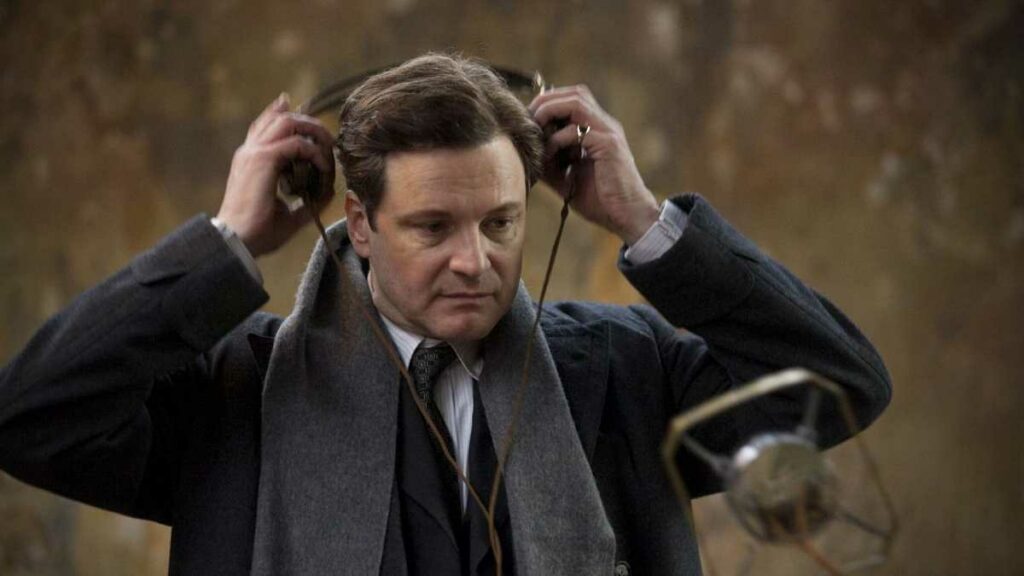Today we continue with The King’s Speech, a film that illustrates how determination and the right kind of help can break through personal barriers as powerful as the fear of public speaking.
The story focuses on King George VI of England, who had to take on his royal duties at a crucial moment in history, despite suffering from a severe stutter that hindered his ability to communicate.
This monarch, reluctant to expose himself for fear of ridicule and misunderstanding, is forced to seek solutions to overcome a blockage that affected not only his self-esteem but also the people’s confidence in his leadership. Thus begins a therapy process with Lionel Logue, a specialist with unconventional methods who understands that the problem is not merely mechanical, but deeply rooted in insecurity and fear.
One of the most memorable scenes occurs when Lionel confronts the then Duke of York (the future George VI) with unorthodox techniques: he makes him recite texts while wearing headphones playing loud music, in order to distract him from his mental block. Although at first the future king feels humiliated, as the sessions progress he discovers that much of his difficulty speaking stems from emotional tension and the fear of being judged. In this way, he embarks on a journey of self-discovery that requires not only courage to face his own limitations but also consistency in applying the therapist’s proposed exercises.

The metaphor here is clear: at some point, we all have emotional “disabilities” or blocks that prevent us from expressing ourselves freely.
It could be the fear of sharing our ideas in a meeting, the insecurity of starting a project, or even the shame of showing ourselves as we truly are. Just like the protagonist, it’s common for us to face these fears by trying to hide them or avoiding the situations that trigger them. However, as shown in George VI’s journey, the way out lies on the other side of discomfort: acknowledging our vulnerability, asking for help when needed, and gradually exposing ourselves to those challenging situations.
Another key aspect of the film is the trusting relationship that develops between the king and Lionel Logue. This dynamic of support and mutual respect reinforces the idea that, to overcome a personal obstacle, it’s often essential to have close and honest companionship. Far from treating him with excessive deference, Lionel addresses George VI without titles or formality, reminding him that, before being a king, he is a man with common fears and aspirations. That human simplicity ends up being crucial in breaking through the barrier of his stutter.
In the decisive moment, when the monarch must address the country to announce its entry into World War II, every one of the exercises practiced with discipline takes on meaning. The slow and measured speech shows that constant training and perseverance can conquer even the deepest fears. The same applies to our own lives: if we are consistent and believe in our abilities (or seek the help we need), we’ll have the tools to overcome blocks that once seemed insurmountable.
For those looking to draw a parallel with their own challenges, the story of George VI highlights the importance of embracing our fears naturally and transforming them into motivation for growth. If even a king had to unlearn habits, accept the humiliation of failure, and practice techniques that took him out of his comfort zone, we too can dare to acknowledge our weaknesses and train new skills. Ultimately, The King’s Speech teaches us that with willpower, good guidance, and continuous self-confidence work, any barrier—no matter how great—can be overcome.

